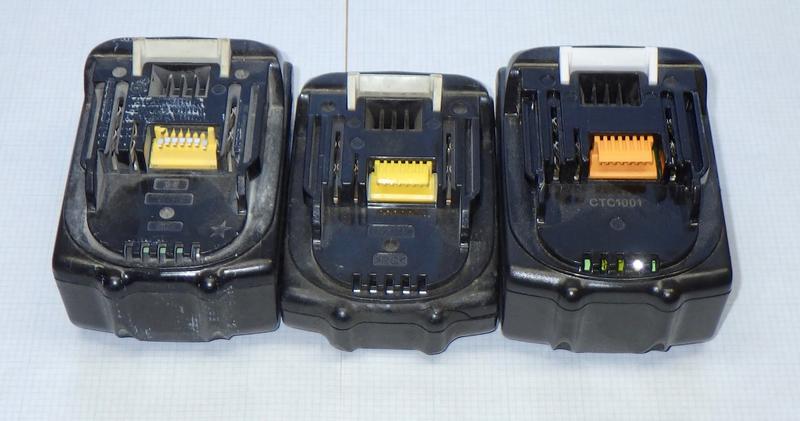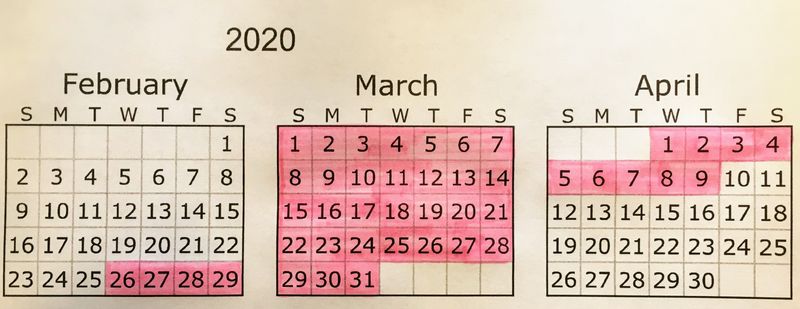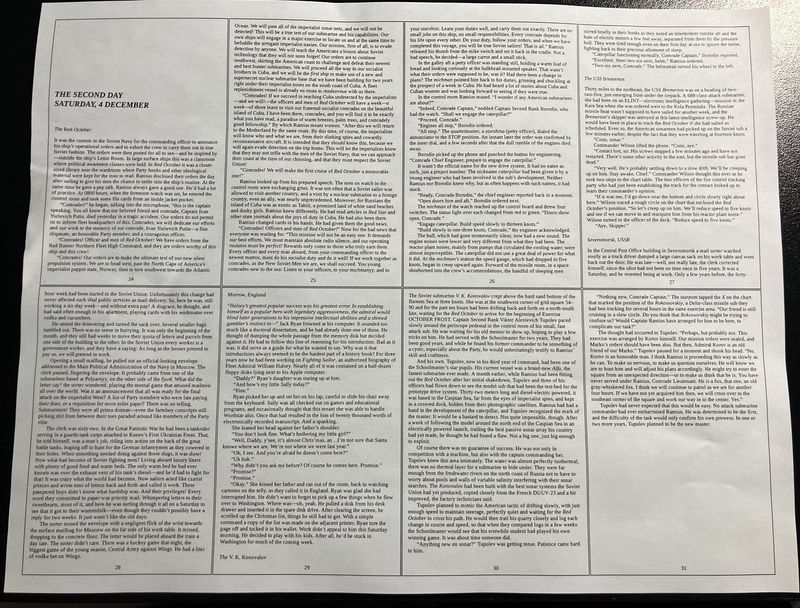This week’s post is an attempt to summarize various thoughts and conversations I’ve had over the past few years with a variety of people. I enjoy talking about the details of life with people, and some themes have come up repeatedly over the years - with one concept being “Enough.”

In totally related concepts, one of the easiest ways to have a lot of stress in life is finances - and while this is far from a personal finance blog, apparently it’s inevitable that, eventually, finances will come up in a long-lived blog. But, beyond simple money, finances tie into a lot of other areas of life. It’s fair to say that one’s finances reflect attitudes and habits accumulated over the years, and often these habits just aren’t examined. So, dive in and examine them with me!
The Concept of Enough
“And I want my Spuddys. I love those things… ‘cuz with a Spuddy, enough just isn’t enough!”

What does the concept of “enough” look like to you? How has this changed throughout your life? Do you even think about it when making decisions about how to spend?
Culturally, we’re really bad at the concept of “enough” - things are like Spuddies. Enough just isn’t enough. But it’s worse than that. Advertising, for years, has worked to convince you that enough isn’t enough. Modern advertising, though, is far more aggressive than the era of Mad Men and most adverting up to about a decade ago. It doesn’t just know your general demographic group. It knows you and what you respond to, so, of course, things are just super duper hyper-optimized to get you to spend money.
And as long as you’ve still got money in your bank account, why… you’re clearly holding out and could spend more, couldn’t you? Heck, even if you don’t have money, have some debt, still go buy something!
I suggest that a better understanding and implementation of the concept of “enough” in modern lives will save an awful lot of money (and therefore stress). Learning to ask the question and answer it for yourself is a great way to think about money and finances going forward - because, really, there’s such thing as enough money/stuff. Heresy, I know…
Another way of looking at the term is the law of diminishing returns, applied to your life. Initially, if you apply resources to some problem, you get returns - and the more resources you apply, the more returns you get. This could be food, a car, an internet connection, a laptop… the more you spend, the more you get. But, at some point, for each additional unit of resource you spend, the additional value you receive starts to decrease. An internet connection is a lot more useful than no internet connection. A 25Mbit internet connection is a lot more useful than a 1.5Mbit connection (a T1 line, for those Weird Al fans out there - though we’re only now getting to 100 gigabytes of RAM in home machines). A 500Mbit internet connection… doesn’t gain you an awful lot over a slower connection for common use cases. And outside a handful of edge cases that look a lot like running bandwidth benchmarks, I assure you, a gigabit connection or faster just isn’t noticeable over something like 100Mbit. Been there, used that, couldn’t notice the difference.

The trick, as always, is being able to figure out the “knee point,” where the value received for additional investment starts to drop off. This applies to purchases as well as to replacement - if something still does everything you want it to do, there’s usually no good reason to replace it.
What do you want? Or what do you need?
Marketers quite literally make their living trying to convince people that they need what they want (or, ideally, need what they didn’t even know existed) - and it’s a wonderful little sleight of hand that costs you some pretty hefty chunks of money over a lifetime. This particular trick has been extensively refined over the past century, and is now a wonderfully refined art of extracting money from consumers.
Figure out what you actually need - then figure out what will accomplish that thing for a reasonable cost over the next reasonable period of time. Try to factor in as much as you can, because there are entire industries based around people not really doing the math on total cost of ownership (“rideshare” is the most common one these days).
Part of the reason I’ve been experimenting with weird little desktops (the Pi 3B+ being the most relevant point of discussion) is just to see what I can make them do. I grew up when 100MHz was blazingly fast, 32MB of RAM (megabytes, not gigabytes - that was for hard drives!) was spacious, and, well, if your phone lines could support a 56k modem… rocket speed! It’s seemed silly to me how much computer people assume you need to use the internet, and the Raspberry Pi desktops have done a great job demonstrating that you don’t need that much, if you’re a bit clever.
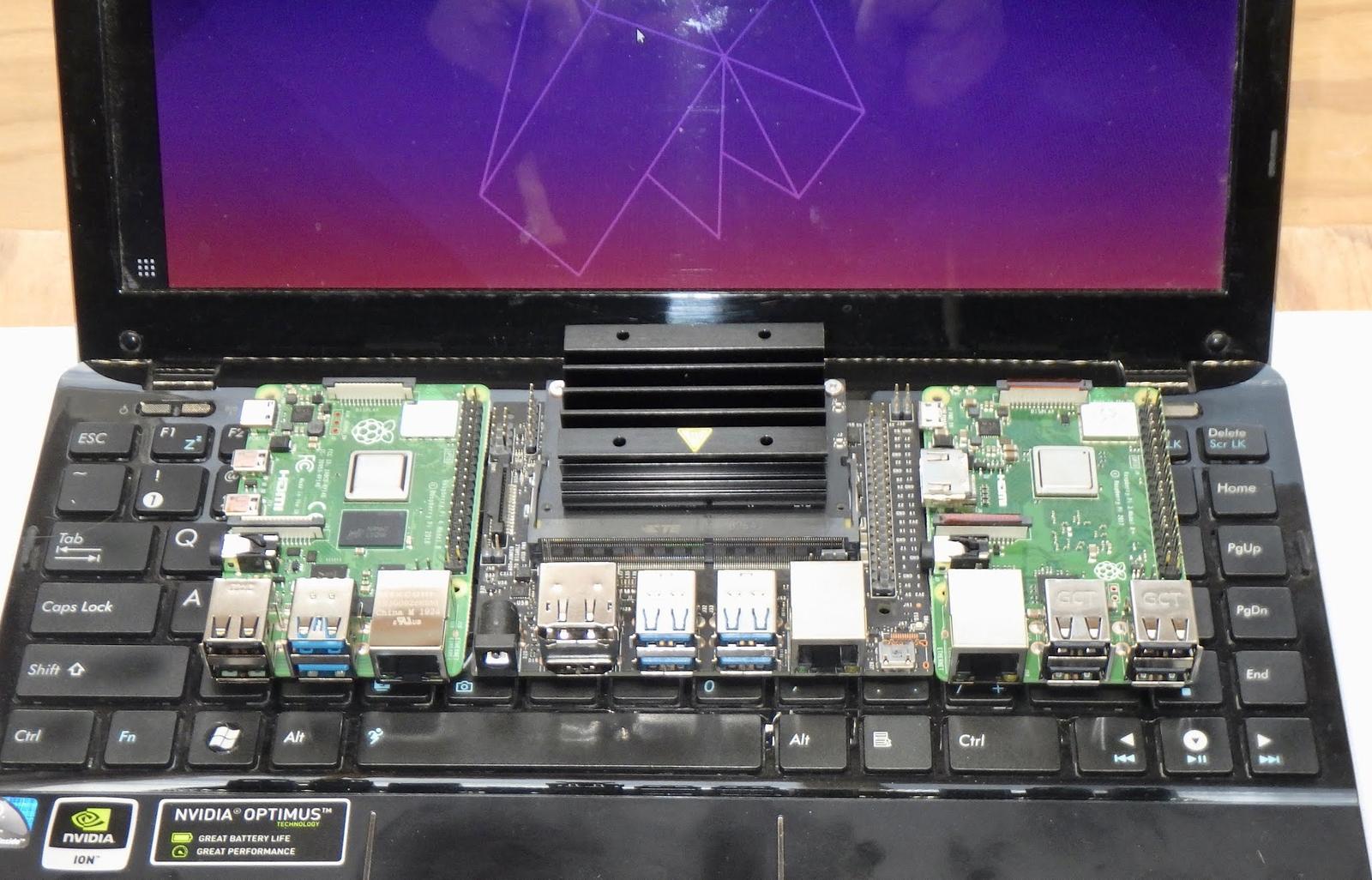
I can do about 90% of what I want to do on the internet with a gutless wonder ARM processor and 1GB of RAM, suitably configured. Going to the Jetson Nano or Raspberry Pi 4, with USB3 and 4GB of RAM? I can do 95-99% of what I want to do on the internet - and most of the limits are things like “I haven’t worked out how to run closed source x86 binaries on ARM.” It’s not impossible, I just haven’t cared, because I have other ways of doing that stuff (mostly involving streaming music).
No, I can’t run modern x86 computer games on them, but - here’s the trick: I don’t care to do that these days. Being outside is way more fun!
Quit Test Driving!
Have you ever realized just how easy it is to get a test drive in a brand new car? If you have a valid driver’s license, you can usually go test drive just about anything you want, no matter what you show up in. Why? Because dealers know that the best way to get you to consider a new car (or motorcycle) is to compare, side by side, your current vehicle (which may have a few miles, a few creaks, and some dirt) to a brand new, shiny, fresh off the truck vehicle. It’s different - and, clearly, different is better!
It took me a while to learn this lesson. Fortunately, I learned it before I had the money to act much on it. I used to test drive cars on a halfway regular basis, and I used to test ride motorcycles as well. All it accomplished was a nagging discontent when I got back in/on my existing vehicle, which worked perfectly fine, and… it wasn’t the new different feel!
Maybe it’s not actually test driving stuff, though. Maybe it’s looking up reviews of the New Gizmo. It’s 25% faster in FooMark. It’s got 30% more terablips. And, why, you can trade your old one in for a credit!
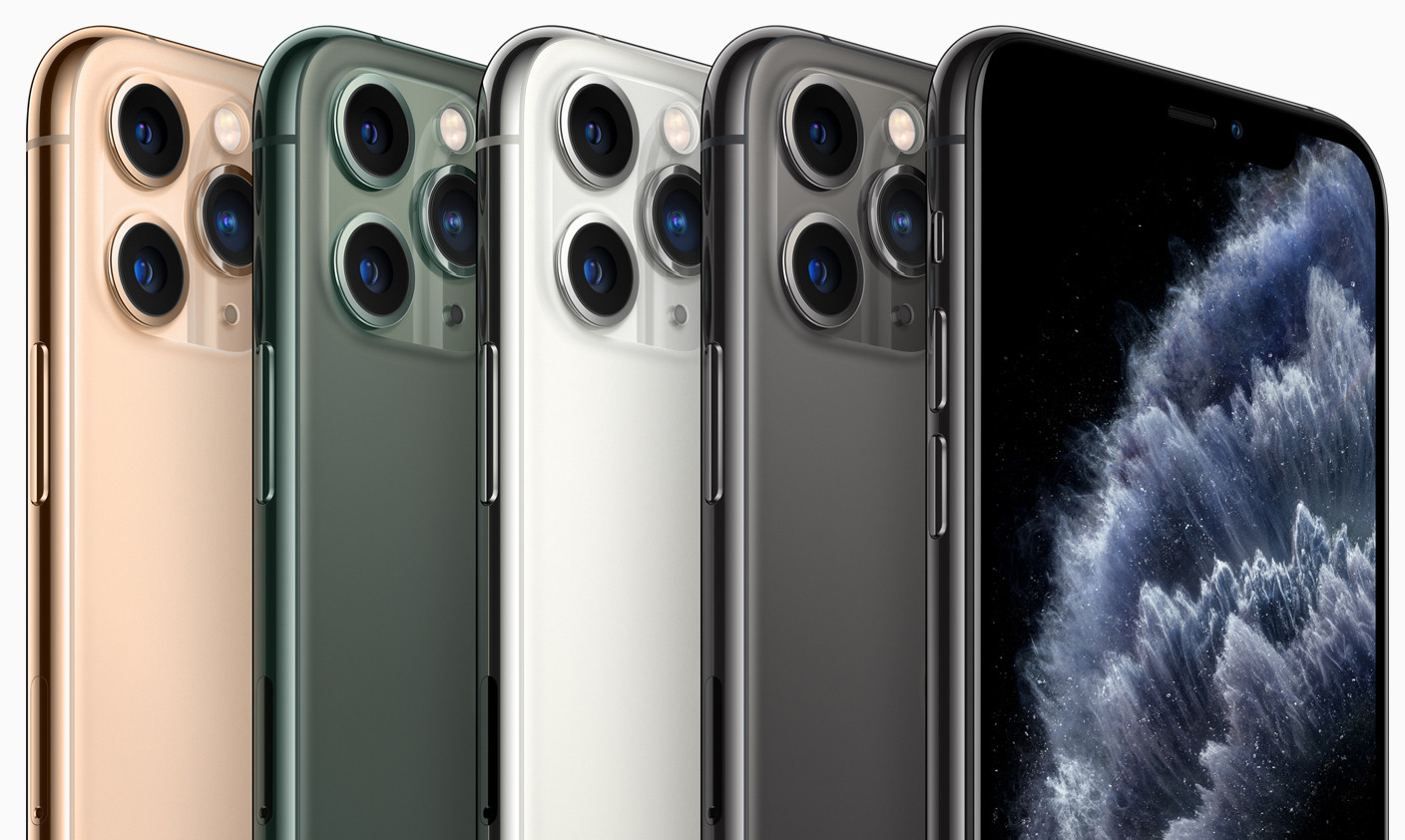
But none of these benchmarks answer the important question: Will it do what you need, any better than what you have now? Just because it’s faster in benchmarks doesn’t mean you’ll notice it for the things you use it for.
When I finished benchmarking the Raspberry Pi 4 against my Jetson Nano, the result were clear: The Pi4, overclocked, is somewhat significantly faster than the Nano. What’s driving my light office desktop today? The Nano. I had some problems with the Pi4 related to rebooting and the SD card, which eventually turned out to be a hardware issue (it was glitching after a reboot even with no SD card). After sending it back for a refund, I had to decide: Is it worth purchasing one for my desktop needs? It’s clearly faster. But I didn’t, because the Nano does everything I ask of it perfectly well. I wouldn’t go out and buy a new Nano, but since I already have one, I’m keeping it in service.
The same wasn’t true when comparing the Raspberry Pi 3B+ and the Nano. The 3B+ struggled, badly, with things like Gmail and Google Docs. It would do it - but only barely, and it would often crash in the process. The Nano handles them fine, and as those are something I like to use, the upgrade made sense. I’m sure I’ll end up with a Pi4 at some point, but it just didn’t make any differences for my current uses - so I don’t have one right now.
Thinking in Monthly Payments? You’re Doomed and Don’t Know It.
“Hey, Robert Reader! This is Gary Goodguy down at your local dealership, and we’ve got a ton of demand for high quality used <your car’s year> <your car’s model>s right now! Come on down for a free appraisal - we can probably get you into a new car for the same monthly payment or less!”
If you’ve ever owned a halfway modern car, you’ve almost certainly gotten these in the mail, or on your voicemail. Is there really such a strong demand for your particular car? No. Does it get people into a dealership thinking about a new car for the same monthly payment? Apparently, or they wouldn’t do it. Are salespeople entertained when I ask what they can do to match my $0 monthly payment? Definitely not.
Think about the framing implied in those advertisements, though: “Of course you’ll always have a car payment. Why keep driving that few year old clunker when for the same amount of money a month, you could be driving a new car?” Why, even if you owe more than the car is worth (which you almost certainly do, for a few-year-old car with a modern auto loan), they can just roll it in and stretch the loan out, and keep you paying, and paying, and paying.
I’ve met people who quite literally expected they’d always have a car payment, and the car replacement timeline was simply, “When we don’t have a car payment, we buy a car to replace whatever the oldest one is.” The attitude was that if they didn’t have a car payment, then they’d spend that money on other stuff (via other monthly payments), and then wouldn’t have the money for a car payment down the road. Scary stuff!
Although I cannot, for the life of me, figure out what marketing group decided that since I own a 2012 Chevy Volt, I’m clearly in the market for an $800/mo Cadillac Escalade lease…

You see the same sort of thing with the proliferation of subscription services - they try as hard as possible to get you to think in terms of monthly payments. Only $10/mo for this, $15/mo for that, $8/mo… and that starts to add up in a hurry.
Let’s say you have a fairly standard set of streaming services - NetFlix, Spotify, YouTube Premium, and, of course, Disney+/Hulu. Netflix is $12.99, Spotify is $9.99, Disney+/Hulu is $12.99/mo, and YouTube is $12.99/mo. All very, very reasonable seeming prices. It comes out to $48.96/mo - or, over a decade, around $5800. Now, it’s entirely possible to consider that reasonable, but do the math to annual or decade costs when you’re thinking about monthly payments. They add up, and sometimes linger even if you’re not using them, because it’s just a little drip. Drips add up!
Oh, but wait, there’s more! Now you need a cell plan with more data to let you stream all the stuff you don’t care to download! So add yet more if you want to stream this stuff on the go…
Some companies are insanely obvious about doing literally anything to get you through the door, as long as they can get you to start with monthly payments at some point, because they know people won’t go through the (deliberately difficult) cancellation process for $10/mo. I’m looking at you, Sirius XM… Just don’t get started.
The Incredible Benefits of Being a Late Adopter & The Perils of Hedonic Adaptation
Or, phrased differently, “The New Shiny becomes the New Normal alarmingly fast.”
You can’t miss what you haven’t experienced - and this is true across the range of “nearly everything.” If you’re careful, this can be extended into an approach to life and technology that neatly saves you an awful lot of money.
For years now, people have wondered why I try to avoid the latest shiny things - be it in transportation, computers, entertainment… anything. It’s because of this: I can’t miss what I haven’t experienced.
I was, for a tech guy, insanely late to the SSD game. I knew about them, I knew the benefits, I had serious geek lust for the FusionIO drive (I was a grad student in 2008 and was sorting an awful lot of data - ). And I held off, because I knew that as soon as one of my systems had a blisteringly fast SSD, everything else would suddenly feel slow. They’d be the same speed they had been, but would just feel glacial compared to the new speed of a system.
So I held off, and waited until I was able to score a couple used SSDs at what I considered a reasonable price - then upgraded everything at once. It was awesome, and it was both far cheaper, and far less frustrating, than updating one system would have been. Before I’d gone to SSDs, I did move to using the 10k RPM Raptors as boot drives, though - they’re an awful lot nicer than big storage drives for OS use. I think I still have those, somewhere…
Another deliberate lag was on high DPI displays. You don’t notice the “screen door gaps” between pixels in lower resolution displays until you’ve got something to compare with. Retina displays were quite late to my screen stable, just because I knew I’d want to upgrade everything else to match.
And marketers know this! Get you to update one device, and all of a sudden, you’ll want to upgrade everything else! That gets expensive.
I apply the same sort of thing to vehicles. I can’t miss what I haven’t experienced, and my lack of test driving helps a ton here. I’ve actually never driven anything with advanced driver assist systems - they aren’t particularly useful out where I live (and a “self driving car” needs to be able to comprehend cows and navigate around a spreader doing 15mph if it’s going to be halfway useful to me), so I’m happy to not know what I’m missing. I still think antilock brakes and traction control are pretty neat (though the Urals have neither, and I’m pretty sure my truck is rear axle only ABS). I literally don’t know what I’m missing, which is just fine with me!

Actually, with trucks, I do know what I’m missing: Nothing. I’ve had the occasional opportunity to rent a newer truck on travel, and all I can think with most of the newer trucks is, “Wow, I can’t wait to get back to mine.”
It’s very, very hard to “go back” in terms of features on your whatever. If you’ve gotten used to heated seats, think about going to a vehicle that doesn’t have them. If you can’t imagine life without three cameras (or five, or… how many does a modern iPhone have?), consider going back to a single camera. In almost every case, “new features” are a one way ratcheting function. Be careful with that! It can cost you an awful lot over your lifetime if you pin yourself to high end luxury cars that… get around just as well as a cheaper car.
Fix It, Felix!
Finally, I know I go on about repair on this blog, and there’s a reason. Learning to fix stuff is one of the best skills you can learn for your personal finances!
If you’re highly specialized and earn deep into six figures, yeah, you can probably safely ignore this, handwave about how it’s cheaper to pay other people to do stuff, and be fine-ish. If you’re not, keep reading - and even if you are, repairing your own stuff is just properly satisfying.
I’ve worked on my own cars rather extensively over the years. I never really considered it extensive at the time, but I’ve rebuilt a rotary engine, pulled engines, done just about everything you can do with brakes and fuel systems… most people consider that pretty extreme. I didn’t grow up really working on cars beyond the basics of changing the oil, but I just didn’t like walking - and rapidly worked out that owning a car and being unable to fix it was awfully expensive. I knew a few people who worked on cars, so I just learned from them, read the manuals, and went in. It creeps up on you over time - start with something simple, keep going, and… eventually, the guys at the parts counter not only know your voice, they know what you own. And you’ve got an engine back together, after having taken it to pieces.
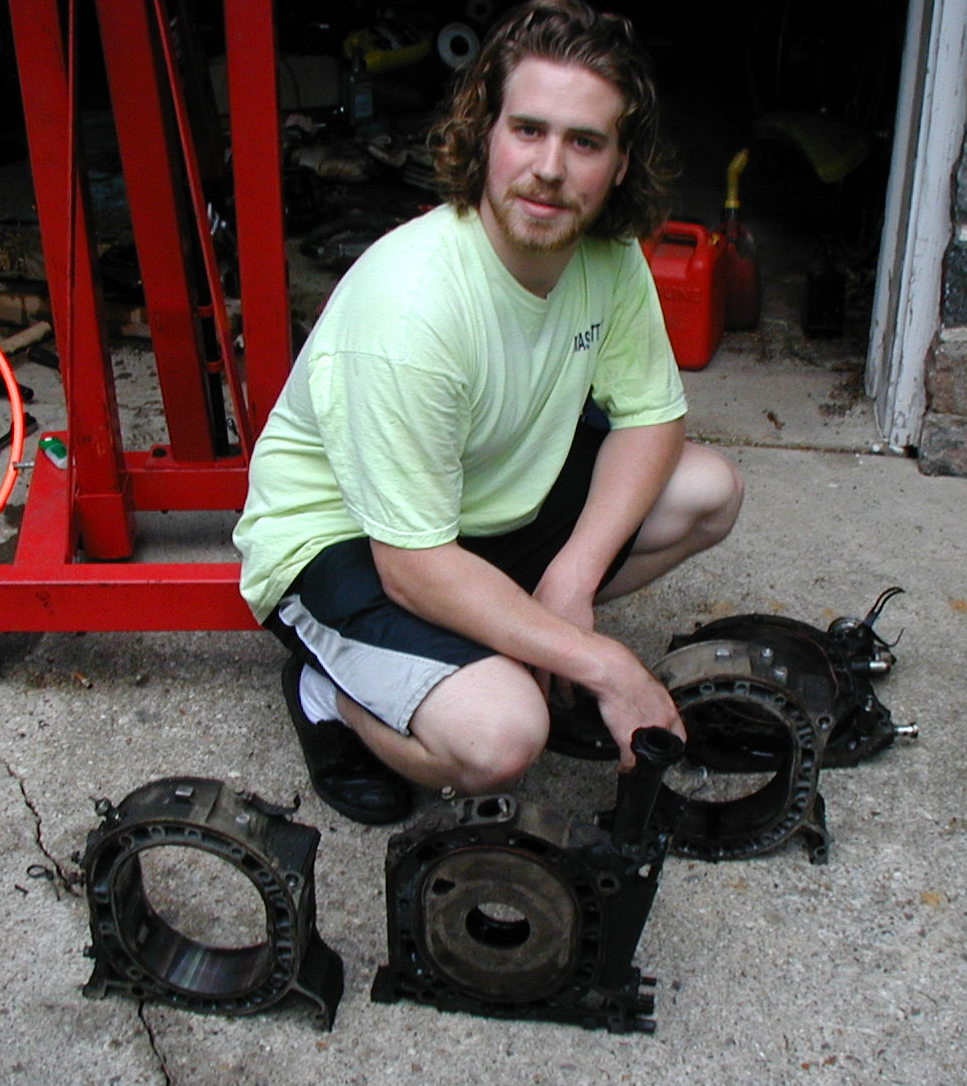
Most people can’t fix stuff (or, to be slightly kinder, haven’t learned and don’t have a huge interest in learning). I don’t understand that point of view, but I’ll happily take advantage of my skills and either fix things for people, or buy broken things cheaply and fix them for our family. It’s a value I’m really hoping to pass on down to our kids - almost anything can be fixed! And if you’re not sure of the value of an item, buy a used one. If you use it a ton and it fails, well, then you’ll be comfortable spending the money on a newer one.
This is also implies one ought to buy things that are repairable. I’ll point to a certain popular wireless ear-stick as an example of the sort of unrepairable thing I try to avoid - I’m not OK with paying $150 for things that appear to last roughly three years before being e-waste when I can use perfectly good headphones that last far longer. I’ve got a decade old set of Sennheisers that are still going strong!
It also implies one ought to consider service life - I do use an older-but-still-supported iPhone 6S as a mobile device. Parts are easy to come by, they’re actually quite well built these days, and, as much as Apple hasn’t done a great job of making repairable laptops recently, the phones are built so the common failure points (screen and battery) can be quite easily repaired. That phone is going on 4.5 years of OS support - even flagship Nexus/Pixel devices don’t get that (not that they last that long before having hardware problems anyway).
There’s Always an Opportunity Cost
I’ll talk about this a bit more next week, but we’re also culturally extremely bad at thinking through the opportunity costs of doing something. Especially in the technology space, the common attitude seen is, “If there’s any benefit, it’s worth doing!” - you saw this a lot a decade ago when people were talking about Twitter, though other social media platforms certainly take advantage of it as well. And, of course, the new phone has a better camera, or a faster data connection (if you’re standing on the right part of the right street corner in the right city, with the right add-ons to your data plan - I can’t say 5G impresses me yet), or… something.
But what are the costs? Sometimes, it’s a monetary cost, but sometimes it comes in the form of distractions - modern social media, on a modern smartphone, is deadly to the ability to “deep work.” Sometimes it’s security - I doubt the people who installed an internet-connected fish tank at a casino expected it to be a key element in hacking the casino’s network - but it was.
Maybe it’s just the time spent ensuring all the various “things” talk to one another and stay talking, then figuring out how to turn the lights off next time Comcast has a nation-wide outage.
But there’s always an opportunity cost - and, again, we’re just bad at thinking it through. Or, in some cases, we don’t even know what they are early in a technology’s lifecycle. Perks of being a late adopter!
The Defaults are Wrong
My main point here is that for far too many people, “the defaults are wrong.” We’ve got a society in which a depressing amount of what people “know” about credit cards and credit ratings is wrong, biased in the way that’s most useful to the credit card companies. There’s a ton of focus on “building credit” - taking out loans and paying them, so you can get bigger and bigger loans, for giant houses, new cars that cost more than some houses, the latest and greatest phones, etc. Everyone is trying to get you to just commit to that new monthly payment - and if you aren’t careful, there goes an awful lot of money, flowing out to pay for replacing perfectly good things. So, then, you have to work a lot of hours, pay people to do stuff you could do on your own if you had more time, and the cycle continues. I was in Seattle for a while, and this positive feedback spiral was on full display. Insanely expensive houses, insanely expensive cars, and people who were trapped in their jobs to pay for it - and to pay other people to do things like mow their lawns, because they didn’t have time. Nobody did anything themselves, and it was just a weird, expensive place that, obviously, we didn’t stay in. Nobody did even basic repairs themselves either - that was the strangest thing to me.
So think through it. Don’t just do something because everyone does it - decide if you value that thing or action enough to spend the time and money on it. And, if you do, see if you can find ways to obtain it for less.
Done right, you can shake free an awful lot of time and money in life for things other than staying on a train of profitability for companies that just can’t stop inventing new ways for you to buy things over and over.
I assure you - “enough” is a thing. And it’s a very, very useful thing to think through across your life!
Making Space for Analysis
I expect some of my readers are comfortably here as well. I expect some aren’t. If you’re not, part of the problem is that “from the inside,” all of this looks sane. Monthly subscriptions, being sucked into the tech upgrade cycle, car leases, etc. How do you make the space to back up, isolate yourself from some of the madness, and find the space to be able to sit back and look around?
I’ll talk about that in two weeks!
Comments
Comments are handled on my Discourse forum - you'll need to create an account there to post comments.If you've found this post useful, insightful, or informative, why not support me on Ko-fi? And if you'd like to be notified of new posts (I post every two weeks), you can follow my blog via email! Of course, if you like RSS, I support that too.


